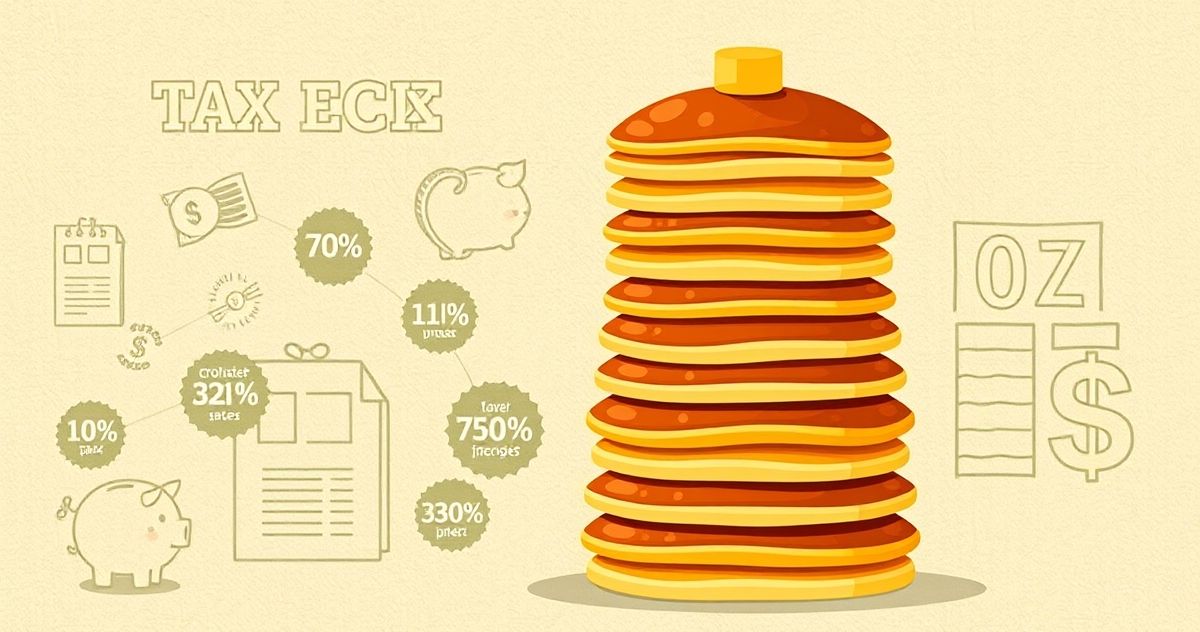Understanding Federal Income Tax Brackets
Hey there! Figuring out taxes can feel like navigating a maze. One of the trickiest parts is understanding federal income tax brackets. They might sound complicated, but they’re actually pretty straightforward once you break them down. Let’s get into it.
The Basics of Tax Brackets
What Exactly are Tax Brackets?
Imagine your income as a stack of pancakes. Instead of taxing that whole stack at one rate, the government taxes different portions of it (different pancakes) at different rates. These portions of income are known as tax brackets. Each bracket has a specific tax rate associated with it. The more you earn, the higher your income will shift into higher tax brackets, but only the income that falls into those brackets will be taxed at that higher rate. This is known as progressive tax system.
The Progressive Tax System
The United States uses a progressive tax system. This means as your taxable income increases, the tax rate on that income increases as well. People with higher incomes pay a larger percentage of their income in taxes compared to people with lower incomes.
How Federal Income Tax Brackets Work
Not a Cliff, But Steps
It’s a common misconception that if you move into a higher tax bracket, all of your income is taxed at that higher rate. This is absolutely not true! Only the portion of your income that falls within that specific bracket is taxed at that rate.
Let’s use a simplified example. Pretend there are only three brackets for simplicity (the actual number changes yearly, and can vary depending on your tax filing status.) Imagine these brackets and their associated tax rates:
* Bracket 1: $0 to $10,000 taxed at 10%
* Bracket 2: $10,001 to $40,000 taxed at 20%
* Bracket 3: $40,001 and up taxed at 30%
Now, let’s say you earned $50,000 of taxable income this year. Here’s how your income would be taxed:
- The First $10,000: This is taxed at 10%. That’s $1,000 in taxes.
- The Next $30,000: This is taxed at 20%. That’s $6,000 in taxes.
- The Last $10,000: This is taxed at 30%. That’s $3,000 in taxes.
Your total tax would be $1,000 + $6,000 + $3,000 = $10,000.
As you can see, your income is not all taxed at 30%. Only the portion of your income within the highest bracket is taxed at that rate. This is often confused, but understanding this key point can save a lot of stress and tax surprises.
Marginal Tax Rate vs. Effective Tax Rate
It’s important to understand the difference between two types of tax rates:
-
Marginal Tax Rate: This is the tax rate that applies to the last dollar of your income. In the example above, if you made $50,000, your marginal tax rate is 30%, because that is the tax rate of your highest tax bracket that you’ve earned income into.
-
Effective Tax Rate: This is the actual percentage of your total taxable income that you pay in taxes. In the example above, while your marginal tax rate is 30%, your effective tax rate is 20%. ($10,000 (total tax) divided by $50,000 (total income) = 20%).
The effective tax rate is what you’re actually paying on your entire income, and it’s usually lower than your marginal tax rate. This makes the tax system fairer.
Federal Tax Brackets: Who is Affected?
Everyone who earns an income in the United States is affected by federal income tax brackets. However, the specific brackets and rates can vary depending on your filing status. For example, single filers, married couples filing jointly, and heads of household all have different tax brackets. These brackets are usually updated each year by the IRS to account for inflation. The brackets are also dependent on your taxable income.
Taxable Income: What Counts?
Taxable income is different from gross income (the total amount you make). Your taxable income is your gross income minus certain deductions, such as:
- Standard Deduction
- Itemized Deductions
- Retirement contributions
- Student loan interest
These deductions reduce your taxable income, which can also lower your tax burden. The lower the taxable income, the lower your tax bill and tax rate.
Filing Status Matters
Your tax filing status determines which tax brackets apply to you. Here are the common filing statuses:
- Single: For individuals who are not married.
- Married Filing Jointly: For married couples who file one tax return together.
- Married Filing Separately: For married couples who file separate tax returns.
- Head of Household: For unmarried individuals who pay more than half the cost of keeping up a home for a qualifying child or other dependent.
Each filing status has its own set of income brackets, so it’s crucial to choose the correct one when filing your taxes.
Tips for Managing Your Tax Bracket
Here are a few things you can do to manage your tax liability:
- Maximize Deductions: Be sure to claim all eligible deductions to lower your taxable income.
- Contribute to Retirement Accounts: Contributions to traditional IRAs and 401(k)s are often tax-deductible and can help lower your taxable income, and often help to keep you in a lower tax bracket.
- Tax Planning: Consider consulting with a tax professional for personalized advice. Tax planning is a great way to try to mitigate taxes and plan for the future.
Common Misconceptions
- Myth: Moving to a Higher Bracket Means You Take Home Less Money: As mentioned, this is incorrect. Only the portion of your income that falls into a higher bracket is taxed at that higher rate.
- Myth: All Income is Taxed at the Highest Rate: This is not true. The marginal tax rate only applies to the last dollar of your income.
- Myth: Tax Brackets Change Your Take-Home Pay Significantly: While taxes can certainly affect your income, they should not dramatically change. Your effective tax rate is usually much lower than your marginal tax rate.
Related Concepts
- Tax Deductions: These reduce your taxable income, which lowers your tax liability.
- Tax Credits: These directly reduce your tax bill, providing dollar-for-dollar savings on your tax liability.
- Taxable Income: The amount of income that is subject to income taxes.
- Tax Liability: The total amount of taxes you owe.
Conclusion
Understanding federal income tax brackets is essential to managing your taxes effectively. By knowing how the brackets work and how to maximize deductions and credits, you can make informed financial decisions and minimize your tax burden. Remember, the tax system is not designed to take the shirts off of your back, but for the government to provide for its many needs. If you are still confused, seek the advice of a qualified tax professional!

